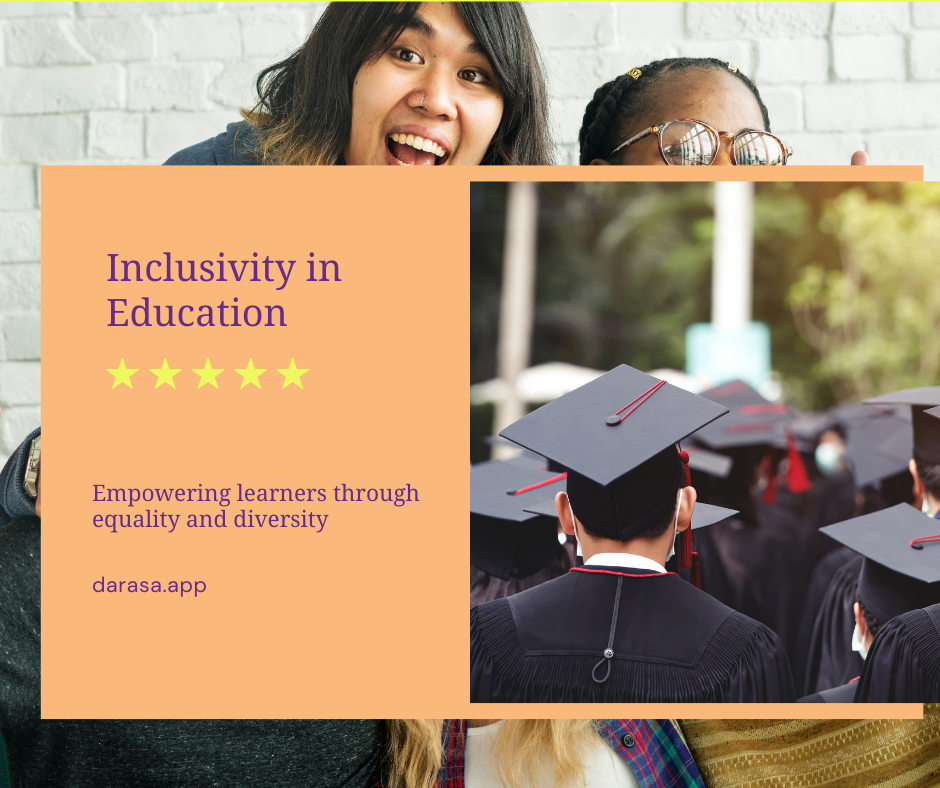
Fostering Inclusivity and Equity in Education
Education is a fundamental human right and a powerful tool for social change. However, not everyone has the same access to quality education and the opportunities it brings. Many students face barriers and disadvantages due to their background, identity, ability or circumstances. How can we ensure that every learner is valued, respected and supported in our education systems?
In this blog post, I will explore the concepts of inclusivity and equity in education, and share some examples of policies and practices that can foster them. I will also discuss the benefits of inclusive and equitable education for students, teachers and society as a whole.
What are inclusivity and equity in education?
Inclusivity and equity are two interrelated principles that aim to promote fairness, justice and diversity in education. According to UNESCO, inclusivity means that “every learner matters and matters equally”, and that education systems should be designed to meet the diverse needs of all students. Equity means that “every learner has an equal opportunity for educational progress”, and that education systems should address the root causes of disadvantage and discrimination that affect some students more than others.
Inclusive and equitable education systems are flexible and responsive to the individual and collective needs of students, teachers and communities. They value and celebrate diversity as a source of richness and strength, rather than a problem to be solved. They also foster a culture of respect, collaboration and belonging among all stakeholders.
How can we foster inclusivity and equity in education?
There is no one-size-fits-all approach to fostering inclusivity and equity in education, as each context has its own challenges and opportunities. However, based on a holistic framework developed by the OECD, there are some key policy areas that can be considered:
- Governance: This refers to the vision, leadership and coordination of education policies and practices at different levels (national, regional, local and school). A clear and coherent policy framework on inclusivity and equity can provide guidance and support for all actors involved in education. It can also ensure alignment and coherence across different sectors and domains, such as health, social services, labor and justice.
- Resourcing: This refers to the allocation and distribution of financial, human and material resources for education. Adequate and equitable resourcing can enable education systems to provide quality and accessible education for all students, especially those who are most in need. It can also support the development and implementation of inclusive and equitable curricula, pedagogies and assessments.
- Capacity building: This refers to the development and enhancement of the knowledge, skills and attitudes of education professionals and other stakeholders. Effective capacity building can empower teachers, school leaders, parents and community members to create and sustain inclusive and equitable learning environments. It can also foster a culture of continuous learning and improvement among education professionals.
- School-level interventions: This refers to the policies and practices that directly affect the learning experiences and outcomes of students in schools. These include, but are not limited to, school climate and culture, student participation and voice, curriculum and pedagogy, assessment and feedback, student support and guidance, and parental and community involvement. School-level interventions can promote the academic, social and emotional development of all students, and address their specific needs and interests.
- Monitoring and evaluation: This refers to the collection and analysis of data and evidence on the performance and impact of education policies and practices. Systematic and comprehensive monitoring and evaluation can provide feedback and information for decision making and improvement. It can also ensure accountability and transparency of education systems, and promote a culture of evidence-based policy and practice.
What are the benefits of inclusive and equitable education?
Inclusive and equitable education can have positive effects not only for students, but also for teachers and society as a whole. Some of the benefits include:
- For students: Inclusive and equitable education can enhance the learning outcomes and well-being of all students, especially those who are marginalized and disadvantaged. It can also foster the development of key competencies and values, such as critical thinking, creativity, collaboration, communication, empathy and respect. In addition, it can prepare students for life and work in diverse and complex societies, and enable them to contribute to sustainable development and social justice.
- For teachers: Inclusive and equitable education can enrich the professional and personal growth of teachers, as they learn from and with their students, colleagues and communities. It can also increase their motivation, satisfaction and retention, as they feel valued and supported in their work. Furthermore, it can enhance their capacity and confidence to deal with the challenges and opportunities of teaching in diverse and dynamic contexts.
- For society: Inclusive and equitable education can contribute to social cohesion and inclusion, as it reduces inequalities and conflicts, and promotes mutual understanding and respect among different groups. It can also foster social and economic development, as it prepares students for the current and future needs of the labour market and society. Moreover, it can support democratic and civic participation, as it empowers students to become active and responsible citizens.
Conclusion
Inclusivity and equity are essential for ensuring that every learner has the right and the opportunity to access and benefit from quality education. Fostering inclusivity and equity in education requires a holistic and systemic approach, involving multiple actors and dimensions. It also requires a commitment and a vision to transform education systems and societies for the better. As the OECD states, “inclusion and equity are not only goals in themselves, but also the means to achieve quality and excellence for all”.
